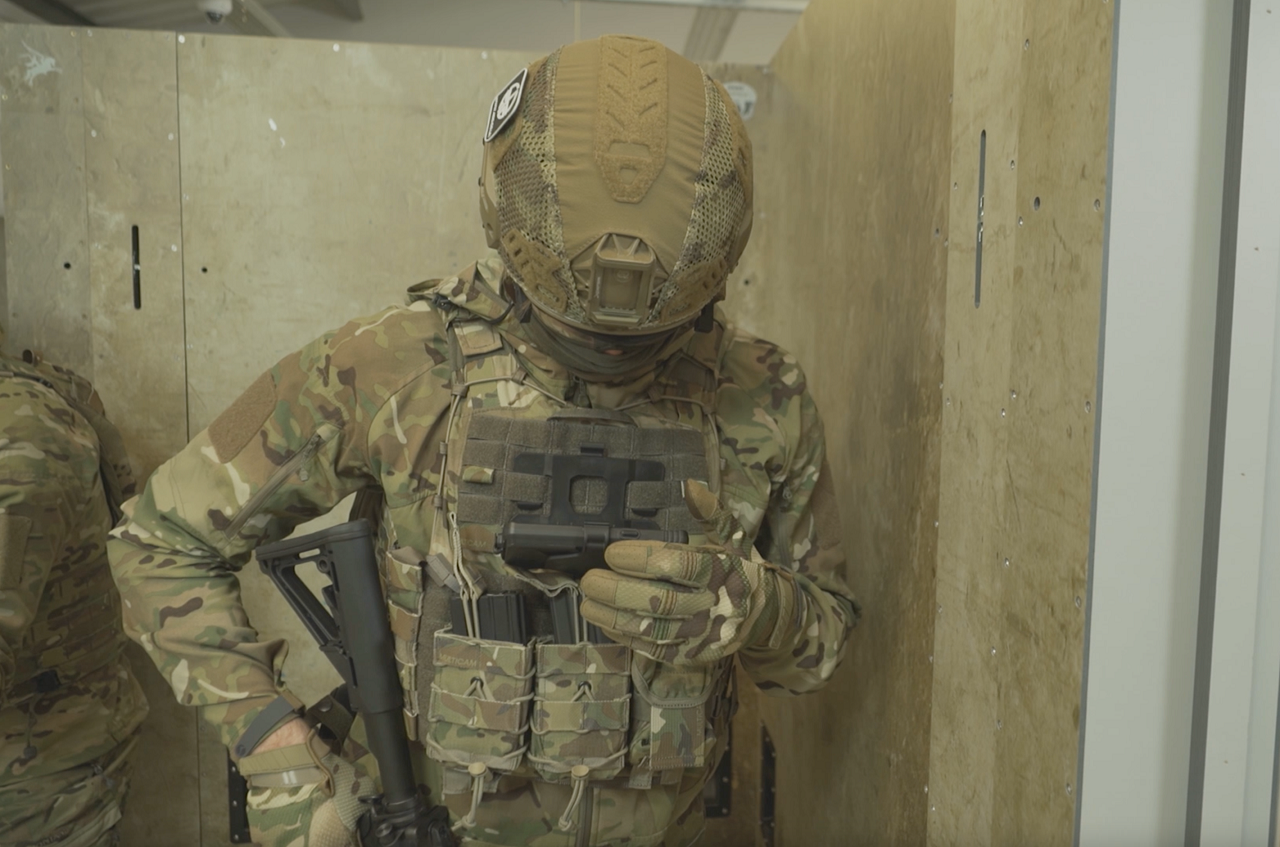
The military is increasingly adopting small, tactical uncrewed aerial systems for close and urban combat scenarios, but the tactics, techniques and procedures and operation of those drones have yet to be tested. Close combat immersive technology specialist, 4GD believes there is a solution.
4GD
4GD was set up in 2016 by two ex-Royal Marines, aiming to blend contemporary user experience and technical knowledge. Their mission is to improve urban training by using reconfigurable panels, data collection, smart targets and special effects to train personnel.
Business development director 4GD James Crowley tells Army Technology: “Some of the tactical developments that happened in Iraq and Afghanistan over the years were exceptional. A lot of the training we were getting, like pre-deployment and general training was very good; but the infrastructure and the equipment available was dated and somewhat lacking.”
He believes many population centres are likely to be involved in some sort of conflict in the future, and 4GD wants to create a product that tackles the increased reliance on urban operations because that is where drones can be valuable.
UAS in a synthetic environment
Crowley says: “There’s been this general assumption that drone technology is going to be really powerful. We’ve got a lot of experience with things like the [General Atomics MQ-9] Reaper.”
When it comes to urban combat that involves specific tactics and techniques, however, Crowley thinks militaries have a long way to go.
How well do you really know your competitors?
Access the most comprehensive Company Profiles on the market, powered by GlobalData. Save hours of research. Gain competitive edge.

Thank you!
Your download email will arrive shortly
Not ready to buy yet? Download a free sample
We are confident about the unique quality of our Company Profiles. However, we want you to make the most beneficial decision for your business, so we offer a free sample that you can download by submitting the below form
By GlobalData“You might argue that some of the most effective drone operators in the tactical environment are actually our adversaries. The likes of Taliban and ISIS would be very quick and picking these things up and implementing them.”
Crowley says that to refine tactics and procedures with tactical drones, militaries need to be using them regularly. Providing forces with an environment where soldiers can operate drones, and practice and fail with them without the fear of damaging equipment.
“Where we see synthetic training as something that takes a lot of the burden by providing a safe space to test practices and be able to teach soldiers why they [UAS] are valuable in the first place.”

Combining the synthetic environment with the reconfigurable panels allow for an even more effective training tool. Credit: 4GD
Crowley continues: “We think the synthetic drone training is the route because if you are not flying a physical thing, you can crash your simulation as many times as you want. You can fly it up to an impact zone and things like that.”
These practices can be carried out in real life as well, but a synthetic environment offers a more passive, quicker and affordable way.
At the recent inaugural British Army BattleLab event in Dorset, 4GD demonstrated the concept of combining UAS tactical deployment and synthetic environment.
Most of the engagement with the UAS is done through a hardware user interface or a command system. Operators receive a small dismounted situational awareness device with a controller, that resembles and behaves the same way as the real one, but there is no physical drone being flown.
Combining the synthetic environment with the reconfigurable panels allow for an even more effective training tool. 4GD has large, clear floor spaces where the floor plates can be assembled into different buildings and different urban scenarios.
“On a smart-facility floor plate, you’ll have a rectangular shape denoting a building on one side, an alleyway or a street scene and another building on the other side,” says Crowley.
“You can then launch a virtual UAS, you can integrate it or engage with it on a dismounted situational awareness device, which you’re [the solider] likely to be using anyway.
“Then you can start to train and practice tactically with those systems, but not in isolation of your ground troops, so you can start getting used to it. You can start to coordinate your tactical UAS with your point troops and be able to develop tactics and techniques around that.”
He says it is possible to introduce simulated fire and similar scenarios, which can be linked together with other aspects of the training to increase pressure and ensure mental preparedness for real-life combat.
4GD is not only aiming to produce a UAS training simulation that replicates reality in meticulous details like an aircraft simulator. Crowley says they are also looking at methods and opportunities to build cohesion between operators and ground troops, focusing on tactical deployment and communication between combined arms.
This story was originally published on Army Technology, part of the GlobalData network.







